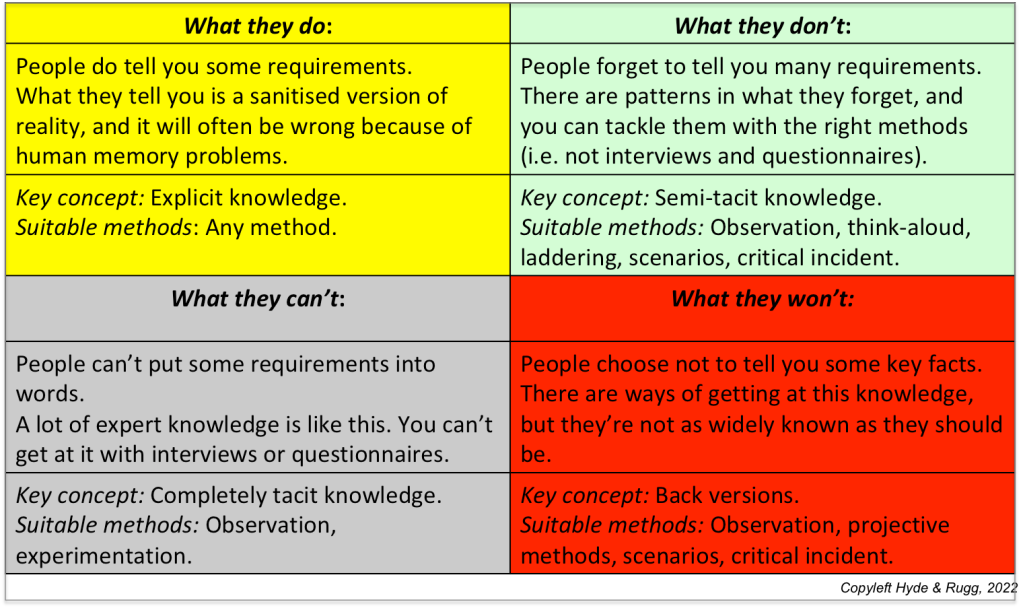By Gordon Rugg
So what is creativity, and how can you generate more and better ideas?
There’s pretty general agreement that:
- Creativity is a Good Thing
- Thinking outside the box is a Good Thing
- Thinking laterally is a Good Thing
That’s a good start.
However, when you start asking about how creativity works, or just how you’re supposed to think outside the box, or think laterally, an element of vagueness starts to roll in, like a dense bank of fog off the Atlantic at the start of a horror movie…
You start hearing stories of people and organisations that thought successfully and laterally outside the box, in a way that solved their problems with designing better elevators. You encounter puzzles involving people and items being found in improbable situations, such as stabbed to death with no weapon visible, in the middle of a field of unsullied snow. It’s all very edifying and interesting, but it doesn’t get to grips with what creativity really is, or how to do anything systematic about creating new ideas.
This article gives a brief overview of a systematic framework for making sense of creativity, and for choosing appropriate methods for generating new ideas.
Continue reading →


